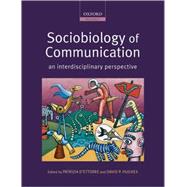
Note: Supplemental materials are not guaranteed with Rental or Used book purchases.
Purchase Benefits
What is included with this book?
| Preface | p. v |
| Acknowledgements | p. ix |
| List of contributors | p. xiii |
| The handicap principle and signalling in collaborative systems | p. 1 |
| Communication in bacteria | p. 11 |
| Communication in social networks of territorial animals: networking at different levels in birds and other systems | p. 33 |
| Communication between hosts and social parasites | p. 55 |
| Chemical communication and the coordination of social interactions in insects | p. 81 |
| Chemical communication in societies of rodents | p. 97 |
| Neurobiology of olfactory communication in the honeybee | p. 119 |
| Rapid evolution and sexual signals | p. 139 |
| Communication of mate quality in humans | p. 157 |
| The extended phenotype within the colony and how it obscures social communication | p. 171 |
| Synergy in social communication | p. 191 |
| Conflicting messages: genomic imprinting and internal communication | p. 209 |
| Language unbound: genomic conflict and psychosis in the origin of modern humans | p. 225 |
| The evolution of human communication and language | p. 249 |
| Why teach? The evolutionary origins and ecological consequences of costly information transfer | p. 265 |
| Grades of communication | p. 275 |
| Concluding remarks | p. 289 |
| Glossary | p. 291 |
| Index | p. 295 |
| Table of Contents provided by Ingram. All Rights Reserved. |
The New copy of this book will include any supplemental materials advertised. Please check the title of the book to determine if it should include any access cards, study guides, lab manuals, CDs, etc.
The Used, Rental and eBook copies of this book are not guaranteed to include any supplemental materials. Typically, only the book itself is included. This is true even if the title states it includes any access cards, study guides, lab manuals, CDs, etc.